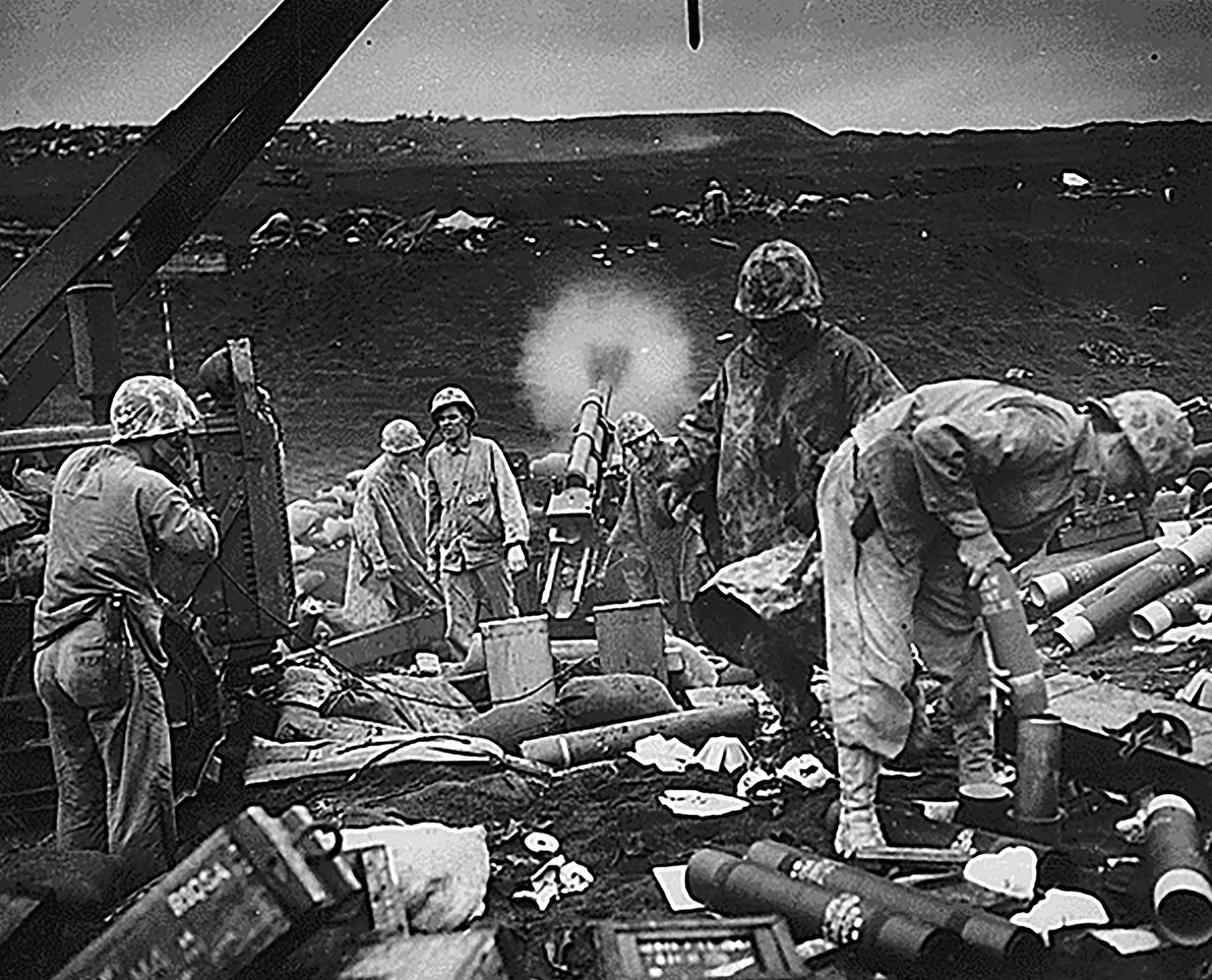The battle of Iwo Jima Island, Japan. The deadliest battle of World War II. See the history colorized
The Battle of Iwo Jima was one of the bloodiest and most intense battles of World War II. The island, located 750 miles south of Tokyo, was a strategically important location for the United States as it could be used as an airbase for bombing raids on the Japanese mainland.

On February 19, 1945, the 4th Marine Division landed on the black sands of Iwo Jima and immediately encountered fierce resistance from the heavily fortified and entrenched Japanese defenders. The Marines had to fight their way across the litter-strewn beaches, facing heavy machine guns and artillery fire from positions cleverly concealed back from the beaches.
Despite the intense fighting and heavy casualties, the Marines were able to push inland and secure a foothold on the island. They faced a determined enemy who had built an extensive network of tunnels and bunkers, making it difficult for the Marines to root out the remaining Japanese soldiers.
One of the key weapons used by the Marines was a gun that pumped a stream of shells into Japanese positions inland. This artillery provided vital support to the ground troops, helping to break through the enemy defences and gain control of the island.
The battle for Iwo Jima lasted for 36 days and resulted in the deaths of over 7,000 Americans and over 22,000 Japanese. It was a brutal and costly victory for the United States, but it was a crucial step in the eventual defeat of Japan. The island's airfields were used to launch bombing raids on the Japanese mainland, and it also served as a base for rescuing downed American airmen.
In conclusion, the Battle of Iwo Jima was a significant turning point in the Pacific War. The bravery and sacrifice of the Marines of the 4th Division will forever be remembered in American military history. The island's black sands will always be a solemn reminder of the cost of freedom and the sacrifices made by the brave men who fought for it.




